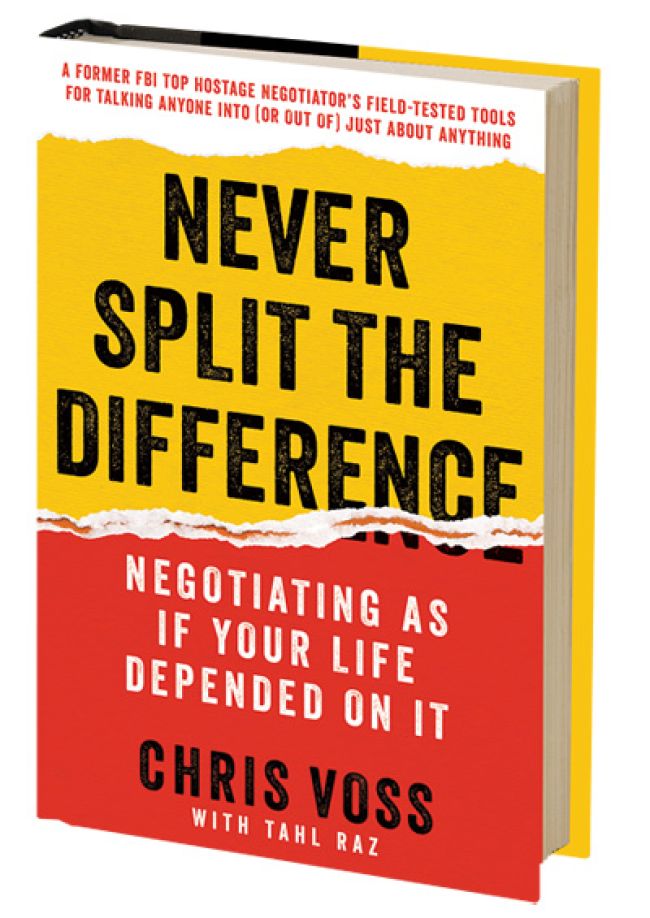
Leadership Strategies: Negotiating as if Your Career Depends on It
What’s a common trait among highly effective fleet professionals?
They’re skilled negotiators.
They get the best terms when purchasing vehicles, equipment and service. They persuade senior management to protect – and increase – their annual fleet budgets. And they gain top priority from OEMs to quickly address and solve critical equipment issues.
So, as you look for ways to advance in your fleet career, what can you do to take your negotiation game to the next level?
Consider reading “Never Split the Difference: Negotiating as if Your Life Depended on It” by former FBI hostage negotiator Chris Voss.
While I’ve read several excellent books on negotiation, including the classic “Getting to Yes: Negotiating Agreement Without Giving In” by Roger Fisher and William Ury, this one is at the top of my list so far. And it’s a must-read for any fleet manager – or any professional for that matter.
Here are three crucial tips I took away from the book that I believe can help you become a more effective negotiator.
1. View negotiation as collaboration, not confrontation.
Key quote: “Negotiation is not an act of battle; it’s a process of discovery. The goal is to uncover as much information as possible.”
Why do so many people hate negotiating? They feel uncomfortable because negotiation can seem confrontational. The thinking is this: “If I ask for more money, what will they think about me? Will they be offended by my request?” Or, “If I reject their offer, how will this impact our relationship?”
The problem with this mindset, Voss says, is that it narrows your view, where you’re blind to a broad range of possible outcomes that could be much more attractive to both parties.
Instead, think about negotiation as an opportunity to collaborate with your counterpart. You have specific goals you want to achieve with the agreement. And the other party has their objectives. Facilitate a discussion where you can both get those goals out on the table.
Now the question becomes, “Where can we find alignment between your goals and mine?”
As the late bestselling author and sales guru Zig Ziglar put it, “You will get all you want in life if you help enough other people get what they want.”
The lesson: If you want to become a more effective negotiator, uncover how helping you get what you want will help your counterpart also get what they want.
2. Deploy “tactical empathy.”
Key quote: “Tactical empathy is understanding the feelings and mindset of another in the moment and also hearing what is behind those feelings so you increase your influence in all the moments that follow. It’s bringing our attention to both the emotional obstacles and the potential pathways to getting an agreement done. It’s emotional intelligence on steroids.”
You sense hesitation from your counterpart about moving forward with an agreement. How do you uncover the real concern to keep the conversation – and negotiation – moving forward?
This is where Voss’s principle of tactical empathy comes into play.
First, the idea is to address the elephant in the room by sharing your observation with the other person. You might say something along the lines of, “I’m sensing some hesitation about this deal. What are your thoughts?” Or, “It seems like there is something here that bothers you. Can you tell me more?”
Then deploy active listening techniques. Label their concern in your own words and get their feedback: “Is that accurate?”
Then you’ll likely hear the magic words: “That’s right.”
That’s because what the other person is really saying is this: “Finally! Someone gets it! Yes. Thank you for trying to see things from my perspective.”
That’s the essence of tactical empathy, which creates an environment in which your counterpart feels safe enough to open up about their concerns and collaborate with you to solve those issues and arrive at an agreement.
“When we applied hostage negotiating tactics to business,” Voss said, “we saw how ‘that’s right’ often leads to the best outcomes … ‘That’s right’ is better than ‘yes.’ Strive for it. Reaching ‘that’s right’ in a negotiation creates breakthroughs.”
3. Use calibrated questions to say no without saying no.
Key quote: “Aggressive confrontation is the enemy of constructive negotiation.”
If the other party gives you what appears to be an insulting offer, resist the temptation to reject it immediately and explicitly. Otherwise, you could miss a valuable opportunity.
Instead, counter with a calibrated question like, “How can I do that?” Or, “If you were in my shoes, how would you be able to do that?”
“Use ‘How’ questions to shape the negotiating environment,” Voss said. “You do this by using ‘How can I do that?’ as a gentle version of ‘No.’ This will subtly push your counterpart to search for other solutions – your solutions. And very often it will get them to bid against themselves.”
Voss says that calibrated questions transform the negotiation’s dynamic from confrontation to collaboration. “You’ve not only implicitly asked for help – triggering goodwill and less defensiveness – but you’ve engineered a situation in which your formerly recalcitrant counterpart is now using his mental and emotional resources to overcome your challenges,” he said. “It is the first step in your counterpart internalizing your way – and the obstacles in it – as his own. And that guides the other party toward designing a solution. Your solution.”

